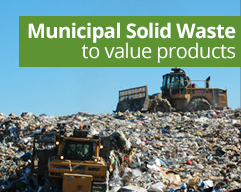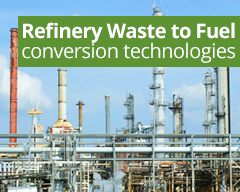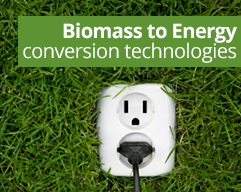
FREQUENTLY ASKED QUESTIONS
1. What are the preferred feedstock for your plant?
• Plastics of all kinds - Other feedstock
• Vegetable oils -Jathropha fruits
• Animal fat — Palm fruit waste
• Used motor oil
• Used Tires
• MSW and other organic material
• Jathropha fruits
• Palm fruit waste
• Sludge from edible oil industry
• De-oiled cake from edible oil industry
• Bamboo (gasification only)
• Wood chips (gasification only)
• Any other organic matter which contain lipids
2. What is the conversation ratio for different plastic feedstock? What are the best plastic type's feedstock for your process?
• Conversion ratio is input specific. HDPE, LDPE, PP will yield highest yields of app 1 kg to 1.1 liters. Other plastics will have reduced yields and may yield app 800 ml per kg. PET is not to be used in our process as PET will have a higher commercial value as a recyclable material. PVC will have the lowest yield of app. 300 ml per kg. Yield from the other feedstock can be intimated on request.
3. What kind of yields can we expect from processing waste plastics with your unit?
• 1.1 liter of fuels per Kg of plastic (25 ton X 1000 = 25000 Kg x 1.1 = 27,500 liters / day).
4. Is sizing required for feed stock? What size of feedstock is necessary?
• Feed stock sizing is required, preferably 2.5 inches.
5. Are feedstock pre-assortment I sorting necessary? Or can we feed mix plastics?
• Pre-assortment of plastic is not required. The plant can process mixed plastics.
6. What is the size (H/W/L) of each plant module?
• The modules are sized 12.5 m x 2.5 m x2.5 m. There will be 3 modules altogether spaced at 3 meters each.Specifications are subject to change.
7. What size of area required for feedstock storage and pre-processing / pretreatment?
• 10.000 Sq. ft. app.
8. What are the products and by-products of the process? (For plastics)
• Liquid fuel -80% (around)
• Liquefied petroleum gas — 15% (around)
• Petroleum Coke / carbon residue — 5% (around)
9. What level of automation we expect?
• The plant is automated. There is a high level of automation with process controllers controlling the operations.
10. How many days of feed stock needed in back stock?
• It is advisable to have 7 days stock.
11. What is the tolerance in quality of feed stock?
• Highly tolerable to moisture and contamination. Process can handle wet plastics having moisture up to 40% and organic contaminants. In the mixed feed stock, up to 5% PVC is tolerable.
12. What is the capacity of prototype? is it full size?
• The capacity of this unit is 5 tons per day in continuous mode. Wehowever operate the same in batch mode currently.
13. Is Prototype working as a fuel production unit?
• Yes, produces mixed fuel output, have a separate distillation unit to distill different fuels.
14. What kind of feedstock is used?
• All types mentioned as in the answer to question 1.
15. What is the tolerance in quality of feed stock?
• Highly tolerable to moisture and contamination. Process can handle wet plastics having moisture up to 40% and organic contaminants. In the mixed feed stock, up to 5% PVC is tolerable..
16. What is the energy efficiency of plant unit?
• The plant does not need external power source. The output gas from the plant (which is app 10%-12% will be used to energize the unit. Rest of the output is energy in the form of liquid at 80% app and solid at 5% app. Overall efficiency thus will be more than 700%. Please note that the energy required to convert the plant is 8 times less than the output.
17. Energy in — energy out ratio?
• > 700%
18. What is the power consumption of plant process / hour or per/ day
• Plant does not require power from the grid. Power required to process the material is generated from the exit gases and thus self sufficient. Power is required for office lighting and other utilities for the office. Office power requirement is based on the lighting, equipment and other utilities planned by you.
19. What is ideal temperature for the process?
• 360 ºC to 400 ºC
20. Do you use catalyst during process?
• Yes, proprietary catalyst
21. what is the amount of catalyst needed for each liter of fuel conversion?
• Catalyst is supplied in the form of field replaceable cartridges. The cartridges will require change as and when they are consumed and contaminated.
22. What is the price of catalyst?
• The catalyst is not sold. The catalyst is supplied as a part of the licensing agreement. Unlimited supply of catalyst as required to process the plastics will be provided. The charges are based on per ton of plastic/raw material processed. Our licensing charges include process license, cost of catalyst and technical advice.
23. How portable is your unit?
• Each unit is portable
• Can be moved to another location easily
24. Do you have the final product (fuels) analyzed?
• Yes, certification can be provided. Testing has been done by independent labs in Europe, Malaysia etc.
25. Do you have different chemical properties for each fuel? Like viscosity, Btu value etc.
• Yes, certification as above consists of test parameters as per ASTM standards
26. Do you have certificates from appropriate authorities?
• No, the fuels are not being projected as motor fuels and hence certification from authorities is not required.
27. Where these fuels used?
• Furnaces
• Generators sets
• Sea going vessels
28. Is further processing necessary?
• Yes (further refined to convert it to petrol, kerosene, diesel and light diesel oil). The fuel output as it is, can be used for stationery engines and in case the same has to be converted to motor fuels then additional equipment is required, viz., Distillation column and de—sulphurization unit.
29. What is LPG (liquified petroleum gas) used for? Does the system generate extra electricity for outside sale?
• Provide energy for the process plant
• Plant can run on its own non-condensable gases
30. What standards the products have?
• ASTM
• Excellent fuel quality, meets standards
31. What are the certificates that are required for selling final products in market?
• For boiler, furnace and generator fuels, certification is not needed. However, licensing from local authorities for sale etc., may be required and these requirements vary from place to place and country to country. Local requirements have to be studied and necessary permits obtained based on local requirements.
32. Where is your corporate office located?
• Sustainable Technologies of America, LLC. 9901 |.H. 10 West, Suite 800, San Antonio, Texas, 78230
33. We are interested to place the order.
Welcome, Please provide the following information:
1) Type of the feedstock, Quantity available
2) Test report if any
3) Daily processing capacity
4) Application: resource recove ry/Waste disposal
5) Location and Land available
6) Electricity connections: Phl voltage/amp/Hz.
7) Interest: End user/ representative/academic. Please sendvmail with the above details to adminreg1®sustechofamerica.com for proceeding further.
34. Where is your manufacturing facility located? Can we visit your plant to witness the process?
• Location of the manufacturing plant is at Vasai, Mumbai, India
• Yes, the process can be witnessed. Also, if you have specific input feed you wish to process, you may send the same to us and we shall process the same in your presence. You can collect the liquid fuel samples for testing at your end.
35. What are warrantiesl guaranties on parts used in plant?
• We offer warranties on workmanship, free replacement of defective parts for a period of one year. Our on—site supervisors will operate the plant for a period of 3 months at your location and will hand over the plant to you. During this period, The plant capacities will be proved and plant parameters adjusted to maximize Yield from your input material.
36. How hard is it to operate the unit and are they maintenance intensive?
• The plant requires regular maintenance and the plant needs a shutdown to Clean reactors once a month. The catalytic convertors are outside the process Reactors and the catalyst changes have to be made as and when the catalyst is poisoned. The catalyst change does not require shut down of the reactors and the catalyst can be changed while the process is on. Regular maintenance ofall moving parts is as per a schedule of maintenance. The plant has very few moving parts and hence it is not maintenance intensive.
37. After order what is the delivery period/schedule of unit?
• Six months. The unit is prefabricated, assembled and tested prior to shipment and hence minimum time is required for erection and commissioning. The product will start coming out within first hour of operation.Delivery is 4 months from receipt of payments.
38. What are the guaranties for production of plant?
• 25,000 liters of petroleum / day, based on the feedstock. The product output depends upon the quality of the input. Maximum output is achievable if HDPE, LDPE, PP type of plastics are used as feedstock. Mixed plastics input will reduce output based on the type of polymer being processed.
39. What are the training requirements for engineersl operators?
• Engineers and Operators will be provided on site training for a period of3 months. Operations manuals, maintenance manuals, safety manuals will be supplied along with the plant.
40. What level of automation we expect?
• The plant is automated. There is a high level of automation with process Controllers controlling the operations.
41. How many days of feed stock needed in back stock?
• It is advisable to have 7 days stock
42. What are the environmental requirements for permits and licenses (EPA)?
• Closed loop system so that the emission parameters are met easily,
• No air, water or other pollution ~ zero discharge system
43. What other licenses required from federal, state, county and city authorities?
• The requirements are site specific and location specific. Local requirements must be studied and permits obtained as per the requirement.
44. Does Polycrack system accepts PVC?
• The process can tolerate up to 5% PVC as it is in the feedstock.
45. What are the Polycrack advantages in comparison to the other technologies?
• One area where most of the p|astic—to-fuel technologies fail is the quality of fuel produced. All such technologies use a catalyst, typically metallic oxides or aluminum silicate compounds, to convert the plastic to fuel. However, the fuel produced has a high trace of catalyst, almost 2% to 5% residue (app 500 Kg to 1250 Kg) in a 25 ton-per—day plant. Accordingly this high volume of residue created was one reason why most plastic-to—fue| conversion plants do not get environmental clearances, because residue has to be disposed.
• Our process leaves no catalyst in the residues. The residue is free carbon that can be compressed into pellets and used as fuel in furnaces. A plant with capacity of 25 tons a day using our technology would typically produce residue of about 1 ton of free flowing carbon powder which has commercial value. In other words it is a zero discharge process.
• Our process can handle moist, dirty plastic, mixed plastics and industrial plastics including automobile fluff.
• Our process can handle mixed feedstock like plastic along with biomass, waste oil, refinery sludge etc.
• We can practically run all kinds of plastics including the metalized ones, plastics backed with aluminum foils, packaging, tetrapacks etc. The yields however will vary depending upon the polymer content in the input material.
• Presence of metals, glass, fiber, wire, cable, organic, inorganic, TiO2 fillers etc., does not impact the process in anyway.
Por un planeta saludable
For a healtier planet
All rights reserved by:
SUSTAINABLE TECHNOLOGIES OF AMERICA








